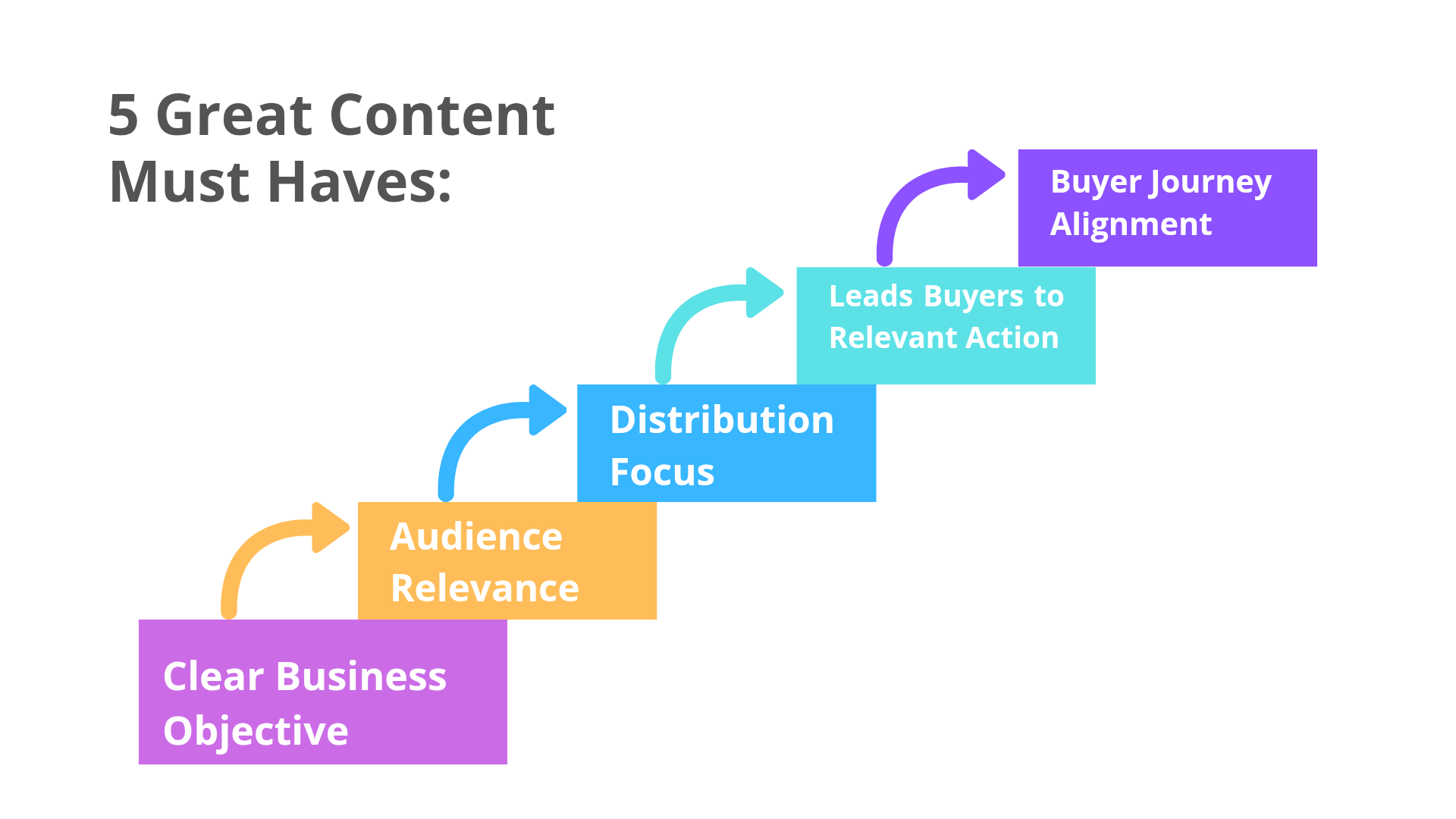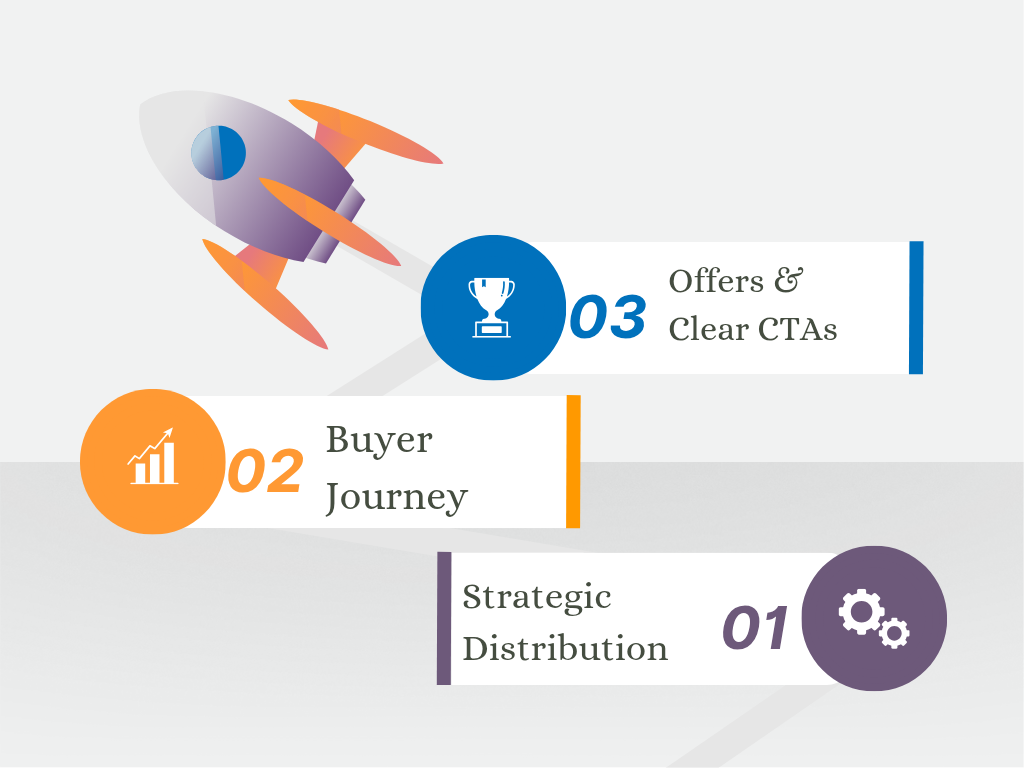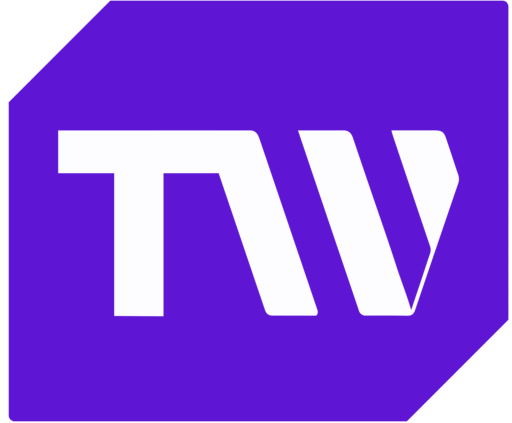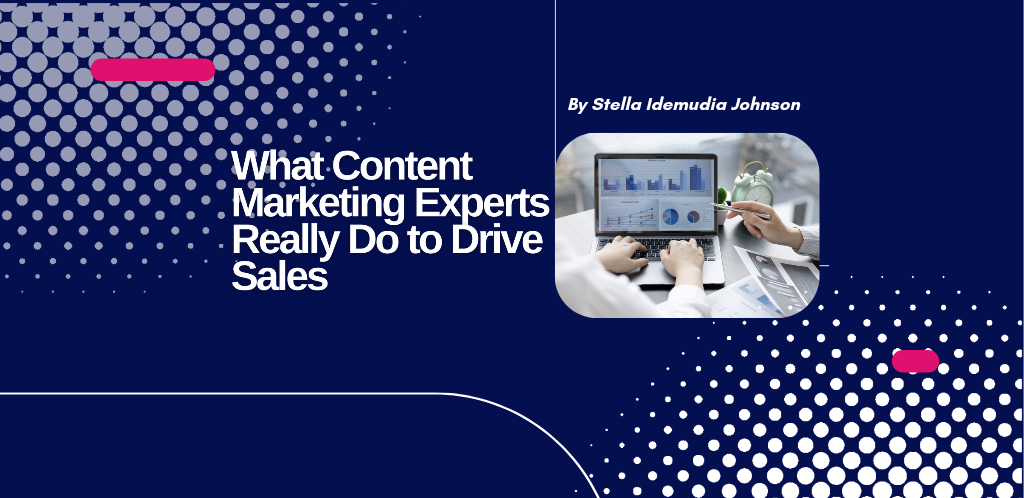Why Great Content Isn’t Enough: What Content Marketing Experts Really Do to Drive Sales
“I Have Great Content… But No Sales.”
You’ve built the blog, published consistently, and even gained traction. Your posts are getting shared, your newsletter is growing, and your social media looks alive. So why isn’t the revenue following?
If this sounds familiar, you’re not alone. Many SaaS founders and marketers feel like they’re doing everything right on the content front, yet their business results lag behind. That disconnect isn’t just frustrating—it’s unsustainable.
In this article, we’ll unpack why great content alone isn’t a growth engine and what top content marketers do differently to turn traffic into tangible revenue.
You’ll learn:
-
Why “engagement” often lies to you
-
The 3 key gaps that kill content ROI
-
How to align content with conversions, not just clicks
-
What a revenue-focused content engine looks like.
With that said, let’s dive in.
The Myth of “If You Build It, They Will Come”
“It’s been almost 4 years since I started my blog, but traffic is almost zero.”
That quote from a frustrated Reddit user hits hard because it’s a common sentiment. Many founders and creators pour time and energy into content, expecting that consistency alone will eventually lead to results.
As Serra Alban, a content marketer at Userguiding, points out, one of the biggest mistakes SaaS companies make early on is focusing on blogs or social media posts in isolation rather than crafting a cohesive strategy that aligns distribution and brand positioning across all channels.
High quality content does matter but publishing without strategy is like filling a bookshelf in a locked room. Nobody sees it, nobody benefits, and nobody buys.
Why does this happen?
-
Content is treated as a deliverable, not a growth function:
-
Effort goes into production, but not distribution or conversion paths
-
Engagement metrics distract from real business impact
Let’s break that down further.
Where Great Content Falls Short.
Think of content as an LLM model. For example, ChatGPT. It can only perform as well as how strategic the prompt behind it is. Feed it something vague, lazy, or misaligned, and its output though polished at the surface level would make you cringe. Picture this: “In a digital landscape driven by synergies, revolutionary ideas emerge…” It looks good in a sentence but what does it even mean? It is disconnected from any real value.
Getting such an output in response to your question is frustrating to say the least and the urge to never use ChatGPT again would be valid. But then, remember those jaw-dropping use cases we’ve all seen? Like a startup generating $10K MRR by automating their customer support with GPT”, that alone proves my point: the problem isn’t the output (content); it’s the input behind.
Below are some of the input behind your content that reduces its ability to bring in leads and ensure your business thrives.
1)Content is Treated as a Deliverable, Not a Growth Function.
If your content goals look like, “Let’s publish something this quarter.” or “We need 4 blogs this month”, you are publishing amiss and it’s no surprise that your pipeline is dry. Great content goes beyond a task to check off your to-do list. It’s a growth engine. How impactful it is and will be to your business goals in the long run is what determines its ‘greatness.’ Take that away and you are left with noise.
“Good content answers a brief. Great content serves a business goal.”
Here is what great content looks like in action:
■Starts with a clear business objective (e.g. increase demo signups, drive email opt-ins)
■Aligns with a product feature or pain point you solve that is audience-relevant.
■Is built with distribution and repurposing in mind.
■Leads the reader to a relevant action.
■Meets your audience where they are in the buyer journey funnel.
If your content doesn’t meet all of these requirements, it is best unpublished. Content is a strategic function as much as it is a creative one. Treating it as such is the shift that transforms content from “marketing activity” into a revenue-generating strategy.

2) Effort Goes Into Production, But Not Distribution or Conversion Paths
We are often so bothered with writing, editing, and optimizing the perfect content that we pay less attention to how to guide customers to it or it to customers and that’s not content marketing. It is content-wasting.
Distribution is how your audience discovers the value you worked so hard to create. Conversion paths are how they act on it. If your content isn’t paired with a system that drives discovery and movement through your funnel, it stays static. Your ICP never sees it. Or worse, they see it but don’t know what to do next. That blog post on “automation tips” might be gold, but if there’s no email sequence to nurture the reader, no contextual CTA, and no retargeting setup, it dies quietly.
High-performing B2B content isn’t just about what’s inside the article and how tied it is to business goals. it’s about how it’s distributed across channels, personalized to buyer stages, and supported with soft nudges that lead to action. The production is what they read. The distribution is how they find it. The conversion path is why they stay. Neglect any of those, and your “content strategy” becomes a static archive with zero business momentum.
Rather than risk that, do this instead:
■Map every content piece to a distribution plan before production begins.
■Include embedded CTAs, lead magnets, or next-step resources within the piece.
■Turn high-value content into multiple formats: short LinkedIn posts, email drips, carousel slides, etc.
■Collaborate with sales to use strategic pieces for outreach or objection handling.
■Republish evergreen content across channels to extend lifespan and reach.
3) A Focus on The Wrong Metric
You post something valuable. It gets a couple of likes, a share, maybe even a comment that says, “This!” For a moment, you feel validated after all, isn’t that proof your content is working?
Not really.
Surface-level engagement can be misleading. Metrics like impressions, likes, and comments are easy to chase because they’re immediate and visible. But when the likes don’t translate into interest, and the comments don’t kick-start conversations, something’s off. It’s like getting compliments on a storefront when what you really want is people walking in and buying.
“When tracking metrics, the key is to look at the bigger picture: how fast and effectively your content builds a community.”
Real success unlike surface-level engagement happens behind the scenes. It’s when someone reads your blog post and later types your brand name into Google. Or when your case study quietly convinces a stakeholder to book a demo. These outcomes are harder to measure but far more valuable than surface metrics.
To ensure you’re tracking the right indicators, use attribution tools like GA4 or HubSpot to trace how your content contributes to conversations, demos, or sign-ups. Look back at your top performing pieces not just to see what got shared, but to understand what sparked action. When creating new content, ask yourself one deceptively simple question: “What do I want this piece to inspire?” If you can’t answer that clearly, the content needs a rethink.
What Actually Drives Growth (Beyond Good Content)
To truly scale and drive consistent business results, your content needs a strategy that covers how it’s distributed, aligned with the buyer journey, and how it converts. Below are 3 expert-backed insights that explain what actually drives growth, beyond just producing great content.
1. Strategic Distribution Across Channels
“Content is king, but distribution is queen and she wears pants.”
Content distribution isn’t just about sharing your posts across platforms. it’s about ensuring your content reaches the right audience in the right way.
Loktionova, a senior content marketer at Semrush explains, “Even the best content won’t make an impact if it’s not reaching the right audience.” That’s why understanding the three types of distribution channels owned, earned, and paid is essential.
To start, you need to know exactly where your audience is. This means understanding their online habits, what platforms they frequent, and the kinds of content they engage with. For instance, a detailed blog post on your website might perform well for more technical audiences, while an engaging infographic could attract a larger crowd on Instagram or Pinterest.
Tailoring your content to fit the platform is another crucial element. Each channel has unique characteristics and user expectations. This requires adapting content formats to maximize engagement. For example, LinkedIn posts should be concise and thought-provoking, whereas a blog post can be more in-depth. By customizing content, you increase its likelihood of resonating with the platform’s audience.
Finally, to amplify your content’s reach, consider leveraging paid advertising. Paid channels, such as Facebook ads or sponsored content, can dramatically extend your content’s visibility, especially when promoting new products or special campaigns. Paid ads allow for precise targeting, ensuring that your content reaches the right people at the right time.
By blending owned, earned, and paid channels, and continuously monitoring how your content performs across these platforms, you can adjust your strategy to keep your content from just existing and ensure its value is maximized.
2)Content That Serves the Buyer’s Journey
Creating content that speaks to each stage of the buyer’s journey is key to turning prospects into customers.According to Madison Logic, the most effective content meets the needs of the audience at every stage.
■Attract (Top-of-Funnel)
Madison Logic emphasizes that at the awareness stage, content should focus on educating prospects. “Content such as blog posts, infographics, and videos can build trust and help prospects understand their pain points.” This stage is about providing value, not a hard sell.
■Engage (Middle-of-Funnel)
When prospects are considering options, Madison Logic advises offering in-depth resources like “case studies, whitepapers, and product guides that help prospects evaluate solutions.” This type of content nurtures leads by demonstrating how your solution fits into their needs.
■Convert (Bottom-of-Funnel)
At the decision stage, content like “product demos, testimonials, and comparison sheets” is key, says Madison Logic. This type of content helps reassure prospects and drives them to take the final step toward conversion.
By structuring content around these stages, you can better guide your audience through their journey, increasing the likelihood of conversion.
3)Offers That Convert + Clear CTAs
Effective offers and clear calls-to-action (CTAs) are the bridge between engaging content and conversions. Both HubSpot and Sigl Creative highlight the importance of making sure your CTA is not just visible but also compelling and aligned with where your prospect is in their journey.
The Right Offer
According to HubSpot, a great offer is one that aligns with your audience’s needs and the stage of the buying process. Whether it’s a free trial, demo, or download, your offer should feel like a natural extension of the content they’ve just engaged with. For example, after a blog post about improving team productivity, a free eBook on productivity tools or a demo of your software could drive conversions.
Sigl Creative expands on this by stressing the need for clear, compelling offers that directly tie into your business goals. “Your offer should be specific, achievable, and provide clear value to the prospect,” they explain. This ensures that the prospect feels they are gaining something tangible.
Clear, Actionable CTAs
A CTA should be actionable and tailored to the user’s awareness stage. At the top of the funnel, it could be a “Learn More” or “Download the Guide,” while at the bottom, it might be “Schedule a Demo” or “Start Your Free Trial.” The key is ensuring that the CTA feels like the next logical step, not a hard sell.
Your CTAs should seamlessly tie into the content, guiding readers toward the next step. A blog post on marketing automation might lead to a CTA that invites the reader to schedule a personalized consultation or download an in-depth case study that showcases your success.
The best CTAs are not afterthoughts. They are integrated within the content in a way that naturally follows the flow of the conversation. Also, they are varied. When someone lands on your site, they’re not always ready to talk to sales or book a demo.
They might be exploring solutions, trying to understand their problem better, benchmarking competitors, or convincing their team you’re worth the investment. If the only path you offer is “Book a demo,” you’re unintentionally ignoring every visitor who isn’t demo-ready.
Your CTAs should meet the audience at their different stages of intent.
Instead of:
“Book a demo”
Try options like:
■”Show me how my content performs”
■ “Get a content revenue snapshot”
■ “See how [X brand] solved this”
■”Take a 2-min self-guided tour”
■Not sure where to start? Talk to a human”
Each one lowers the barrier while still moving the person forward. CTAs aren’t just buttons. They’re momentum builders.

Expert Insight: “What Great Content Marketers Actually Do”
Ankit Mayur Vora, Senior Content Writer at RiverFM, put it well: “Content isn’t a one-and-done tactic. It’s an asset. But assets need a strategy to create value.”
For great content to truly drive growth, it must be part of a larger strategy. Expert marketers understand that content isn’t just about publishing. it’s about connecting it to various stages of the business process. Serra further explains this better: “You are not just a content person. The difference between content that works and content that doesn’t is the whole amalgamation of marketing.”
Here’s what it means in practice:
■Alignment with Product Offers: Content should tie back to your product’s features and pain points, ensuring that what you create addresses your audience’s needs and leads them toward the solution your product offers.
■Conversion Goals: Each piece of content should have a clear path to conversion whether that’s scheduling a demo, signing up for a trial, or making a purchase. The goal is to move your audience down the funnel.
■Lifecycle Stages: Content must meet your audience where they are in their journey, providing value at each stage. From awareness to decision-making, great content nurtures leads and builds trust.
■Focus on Metrics That Matter: Marketers prioritize leads, demos, and pipeline growth over vanity metrics like impressions. They measure what drives actual business results. When content is treated as an asset with a strategic approach, it becomes more than just words on a page. it becomes a tool for growth.
To assess whether your content is truly driving results, ask yourself these questions:
-
Is it mapped to a specific stage of the funnel?
-
Does it link clearly to a product feature, offer, or next step?
-
Is it distributed where your ICP actually hangs out?
-
Can you track tangible results (leads, demos, signups)?
If the answer is “no” to most of these, you’re likely facing a content visibility or conversion issue, not a quality one. Let’s fix that.
Here’s how to optimize your content strategy:
■Audit your content with purpose: Look at your existing pieces and ask yourself “Does this tie to an offer or a clear next step?” If not, it’s time to sharpen the focus. Content without direction is like sending a letter without an address — It won’t get anywhere.
■Measure the right moves: Instead of chasing vanity metrics, track actions that matter like clicks, demo pages, sign-ups, or downloads. These are the footprints your audience leaves when they’re moving closer to becoming customers.
■Start where you already win: Pick a blog post or asset that’s performing well and double down. Boost its reach with smarter distribution and guide readers with a clear, compelling call to action that speaks directly to what they need next.
Remember, content alone isn’t magic. it’s the connection to your bigger plan that turns words into growth. Think of your content as a bridge. Distribution, funnel alignment, and strong CTAs are the pillars holding it up, carrying prospects from curiosity to conversion.
Here’s a simple framework to keep you on track: Offer → Funnel Stage → Content → CTA → Distribution → Result.
By mapping every piece this way, you stop guessing and start building a reliable growth engine one that fuels leads, demos, and sales, not just page views.
That’s how great content marketers turn stories into success.


